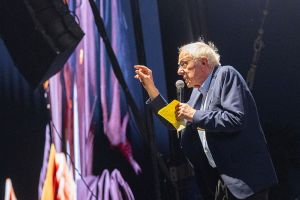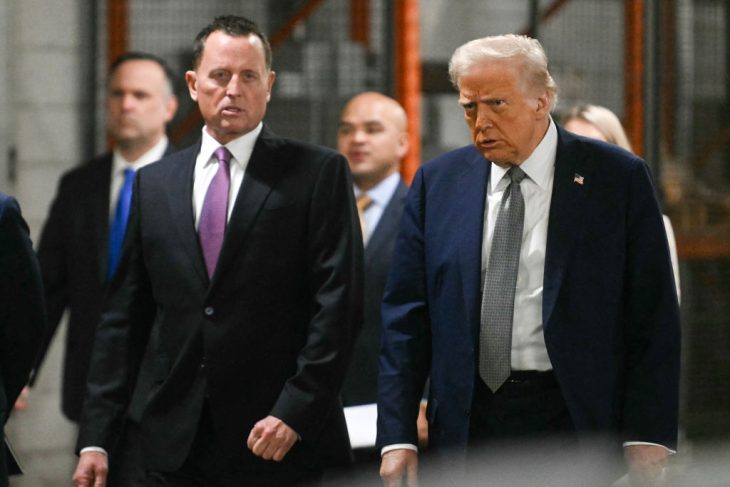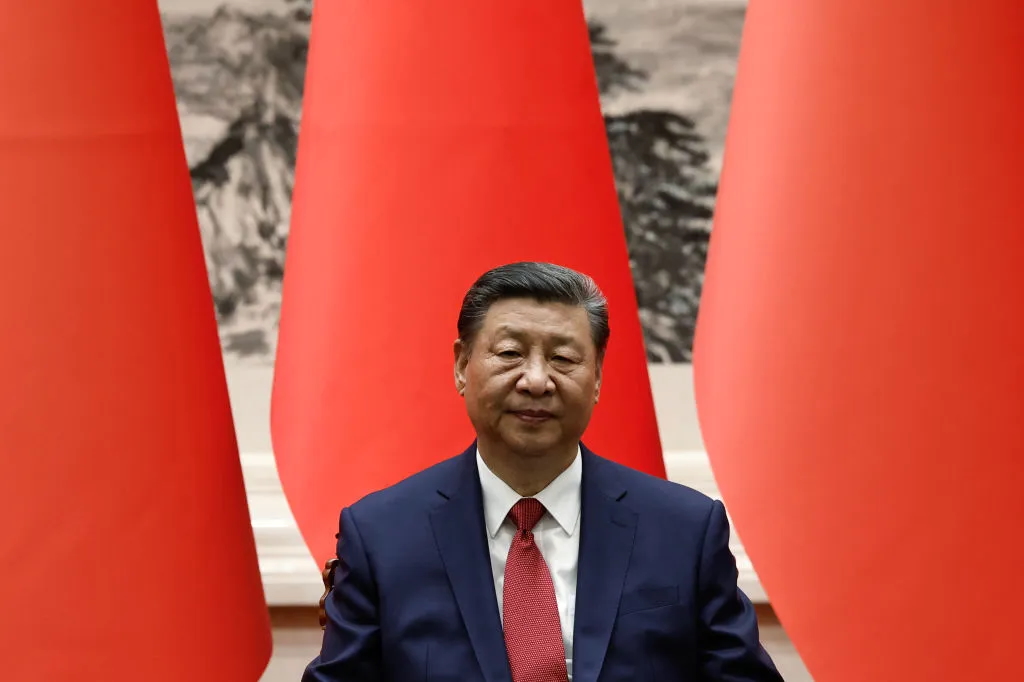That incomparable political and social gadfly P.J. O’Rourke once claimed that he did his “principal research in bars, where people are more likely to tell the truth or, at least, lie less convincingly than they do in briefings and books.” For anyone interested in covering the raucous rollercoaster years of the Trump presidency, that would have meant spending a lot of time in the bar at the Trump International Hotel on Pennsylvania Avenue, just a few blocks east of the White House.
For four years — minus the months when bars throughout Washington were temporarily closed on account of COVID — the pricey watering hole was the destination of choice for pro-Trump and Republican-leaning lobbyists and political activists, numerous White House and congressional staffers and executive appointees, and a supporting cast of visiting campaign donors, political wannabes, groupies, and anyone else eager to bask in the reflected glory of the Orange Menace.
Nowadays, the crowds are not as thick as they were before Joe Biden did to Donald Trump in 2020 what Donald Trump had done to Hillary Clinton four years previously. But the place remains a smartly run, conveniently located gathering spot for influence peddlers and journalistic hacks with adequate expense accounts and political amateurs with more pocket money than local connections. Politics aside, it happens to be a nice place to enjoy a few costly drinks, so long as you’re going with friends capable of carrying on a civilized conversation.
The general clientele of both the bar and the hotel are no better or worse than what one would encounter in other pricey Washington hotels, ranging from elegant, smartly turned-out ladies and well-tailored gentlemen to well-heeled, affectedly shabby-chic young slobs of both sexes. (I refer to the two “science-based” original sexes, not any of the recently imagined oddities of a woke variety.) About the only difference between the lobby crowd at the Trump International Hotel and other top Washington hostelries like the Four Seasons, the Hay Adams and the Willard Intercontinental is that you will still see the occasional guest at the Trump establishment sporting a red MAGA cap, something rarely sighted elsewhere.
Architecturally as well as politically, the hotel itself is a bit of an oddity. Begun in 1891 and completed in 1899, what would come to be known as the Old Post Office Building is a somberly massive, gray-stoned edifice that occupies a block of its own facing north onto Pennsylvania Avenue. Thanks in part to a 315-foot-tall bell tower — the third highest structure in the city barring a few broadcast towers — it lords over most of its neighbors.
Although it was the first building in Washington to be built around a steel framework, ready-wired for electricity, the gloomy stone facade — a splendidly grotesque example of Victorian Romanesque Revival excess — looks like something from the remote past as jointly interpreted by Harry Potter and Chas Addams. The actual architects were Willoughby J. Edbrooke and Jeremiah O’Rourke, the latter no relation to P.J.
Nothing so becomes the building as Halloween, which is how I last viewed it by moonlight, a few days before October 31. It seemed to be glowering at its surroundings through shining windows resembling hundreds of angry eyes. To switch similes, during the Trump years, the brooding pile looked a little bit like a scaled-down version of the Bastille, an antiquated, beleaguered island of royal authority in a city where the mob hated the monarch and seethed with rebellion. Indeed, during the reign of The Donald, police barricades and security details frequently had to defend the hotel perimeter while crowds of obscenity-spouting Antifa types tried to intimidate incoming guests on their way to political fundraisers, conservative testimonial dinners, or just plain nights on the town.
Everything changes once you get inside. Decor in most of the public spaces — restaurants, event areas and ballroom — is relatively restrained, a sort of brightly lit, gilt-and-crystal attempt at summoning up Versailles that got stalled somewhere east of Las Vegas. Staff is generally courteous and conscientious, mostly efficient, and almost entirely of foreign origin, border wall or no border wall. The 263 rooms and suites, especially the large ones, are less restrained, more Donald and less generic Louis Quinze. To cite but one example, I remember a gaudily embellished mahogany headboard in one of the bedrooms topped with a thickly gilded crown that could have come straight out of an upmarket Edwardian bordello.
And yet there is something about the place that I can’t help liking. It has a strangely authentic character of its own, reflecting the strangely authentic character of its current owner. Genuinely phony are the two seemingly contradictory words that spring to mind. All this reaches its apotheosis in the lobby bar, a towering space that fills up what was once a hollow atrium. It’s big and usually busy, but the spacing of the tables and the design of the bar — a series of indented spaces divides a lengthy, impersonal expanse into a series of more intimate, humanly scaled subsets — plus good acoustics, makes it comfortable for small groups and couples even when business is brisk.
Perhaps there’s a lesson here having something to do with creative synergy. Donald Trump is not a man known for his own good taste. Most of the towers, casinos and other mega-projects he has built from scratch reflect this. But in the case of an odd, old, Romanesque pile like the Old Post Office building in Washington, or his Mar-a-Lago (“Sea to Lake”) Club in Palm Beach, originally an ostentatious but undeniably beautiful private mansion built by the heiress and art connoisseur Marjorie Merriweather Post in the 1920s, The Donald does pretty well. Like a hermit crab who knows his limits, he chooses to occupy remarkable shells that he never could have created himself, but which he is capable of appreciating and lending new life.
As the Washington Post and other liberal media outlets have recently — and gleefully — reported, the Trump organization is now actively seeking a buyer for the lease it holds on the Old Post Office (still owned by the US government) that houses the hotel it lavished millions on and has operated at a continuous loss since it opened in October 2016. Many of the lost millions can be credited to legal costs from a steady stream of hostile lawsuits launched against the hotel by Trump’s political foes and hostile media, plus Trump’s magnetic/anti-magnetic energy which tends to repel at least as many people as it attracts.
So the Bastille may finally fall. One of the other big luxury hotel chains may well buy the lease for this prime bit of hotel real estate from the hard-pressed Trump organization, especially since that organization and Donald Trump himself are still being deluged by blatantly political probes and criminal investigations mounted by vengeful congressional Democrats and blue state attorneys general out for revenge.
Still, in the end, even if the Trump name comes off the signage and a new buyer takes over, the unique hotel he created out of a decaying government building may prove to be the only one of Donald Trump’s ambitious undertakings that endures as a local monument to the man most Washingtonians still love to hate.
Aram Bakshian, Jr., served as an aide to presidents Nixon, Ford and Reagan. His writing on politics, history, gastronomy and the arts has been published widely in American and overseas journals.

























